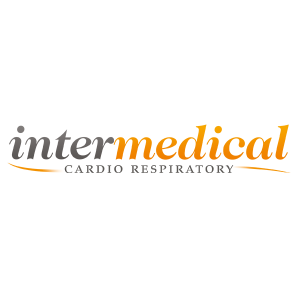
FeNO Testing. Made Simple.
Made Affordable. Without Limitations.

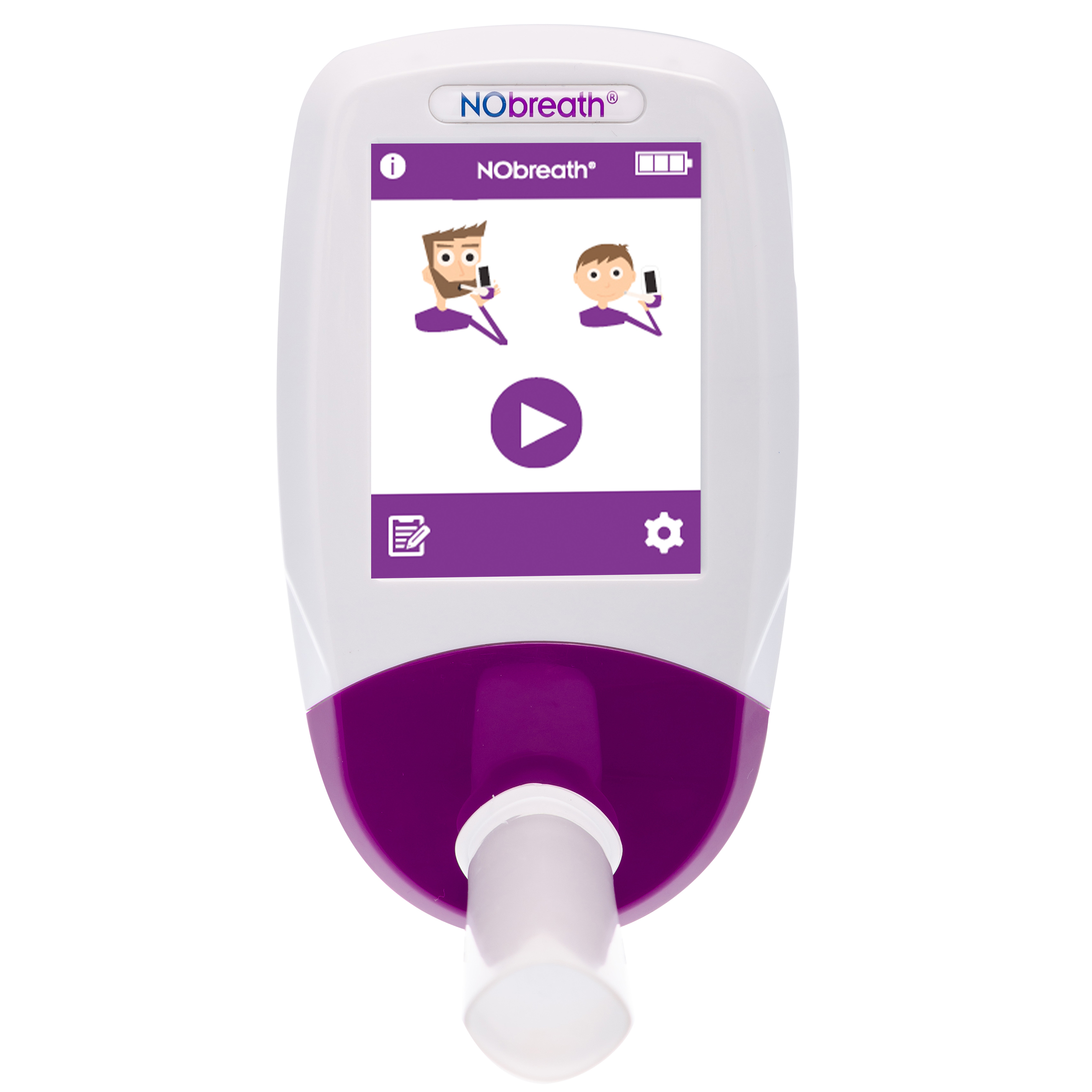
Quick and accurate measurement of FeNO. Without the expensive consumables and running costs.
An adult patient blows into the NObreath® for 12 seconds (children exhale for 10 seconds) giving an instant result for FeNO in ppb (parts per billion). The higher the FeNO reading the greater the inflammation in the airways.
 NObreath® in Primary Care > |
NObreath® in Primary Care >Reach a diagnosis of Asthma quicker, manage patient medication better, reduce “revolving door patients” and free up valuable clinical time without compromising on quality of care. A quick breath test with instant results. |
 NObreath® in Secondary Care > |
NObreath® in Secondary Care >FeNO testing without the expensive running costs or contractual obligations. Make your department’s budget go further with NObreath® – FeNO testing at just £3.70 per patient! Read More > |
A 12-second test in 4 easy steps.
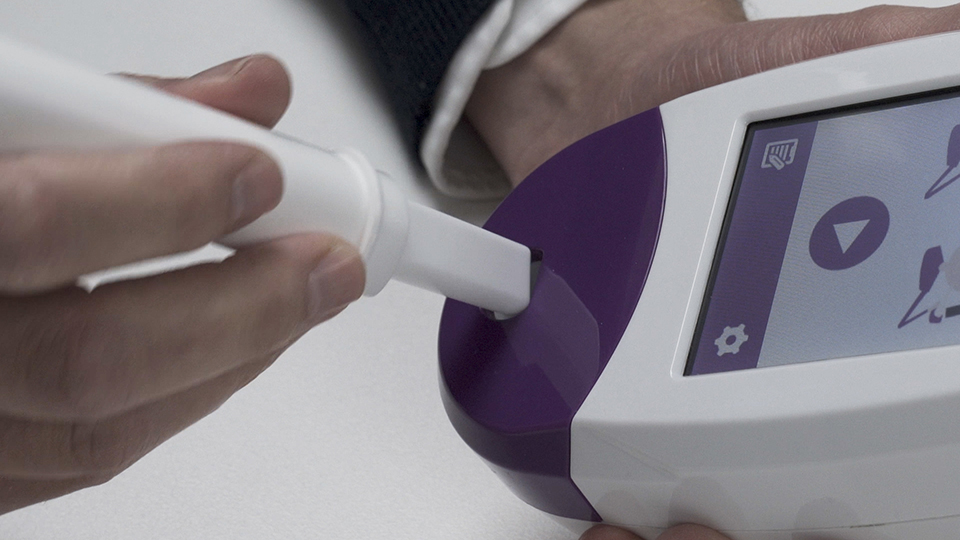
1
The mouthpiece
The mouthpiece is supplied wrapped and is a long tube that connects to the front of the monitor. It contains a one-way valve and a viral bacterial filter reducing the risk of cross-infection between patients. A NObreath® mouthpiece can be used multiple times by the same patient reducing the cost per test.
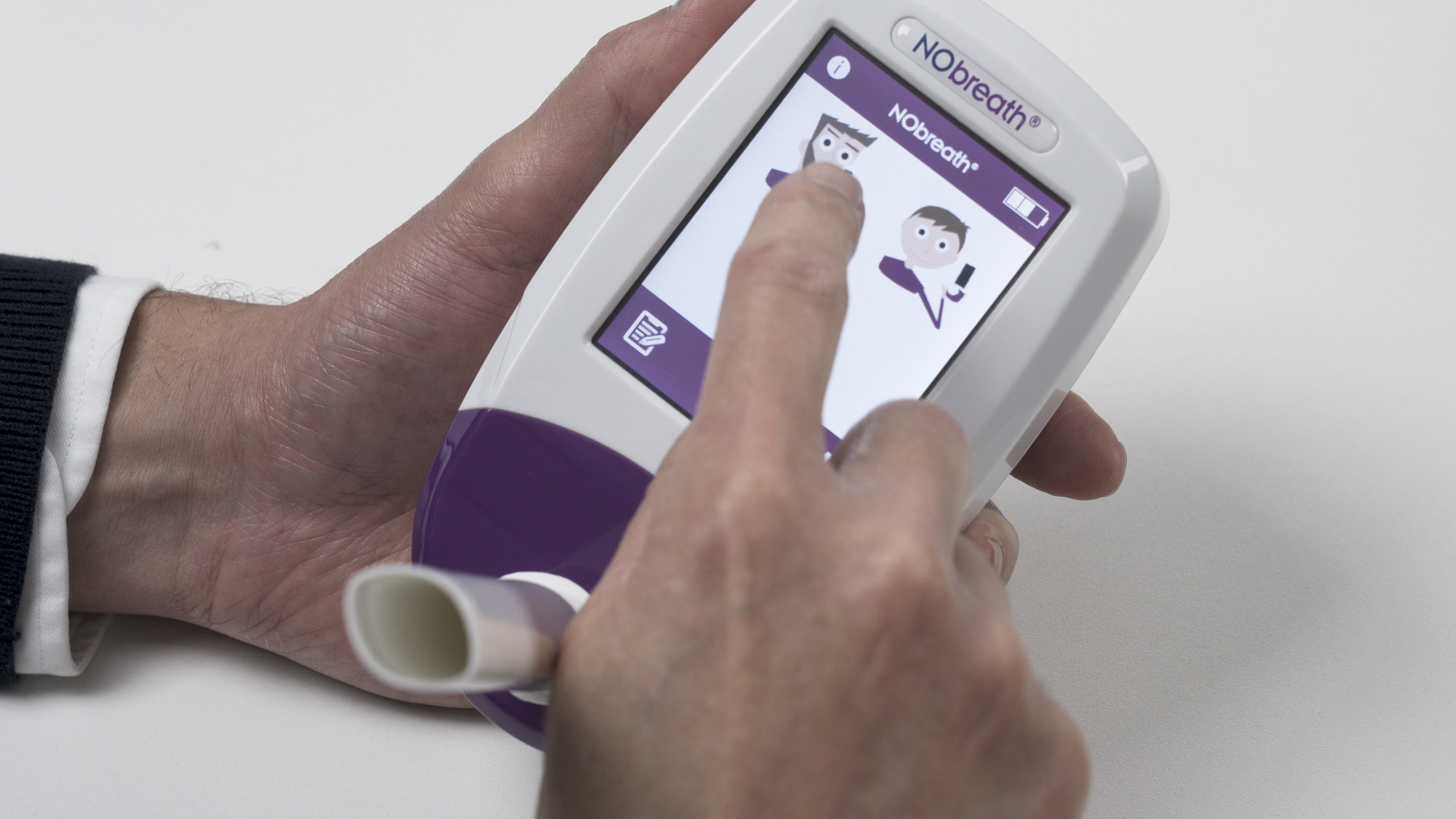
2
Initiate test
The monitor is easy to operate with its icon-based touchscreen display. Power up the monitor from the button located at the top of the monitor. Monitor warm up time is ≤60 seconds. To initiate the test, simply select the adult or child setting and follow the prompts.
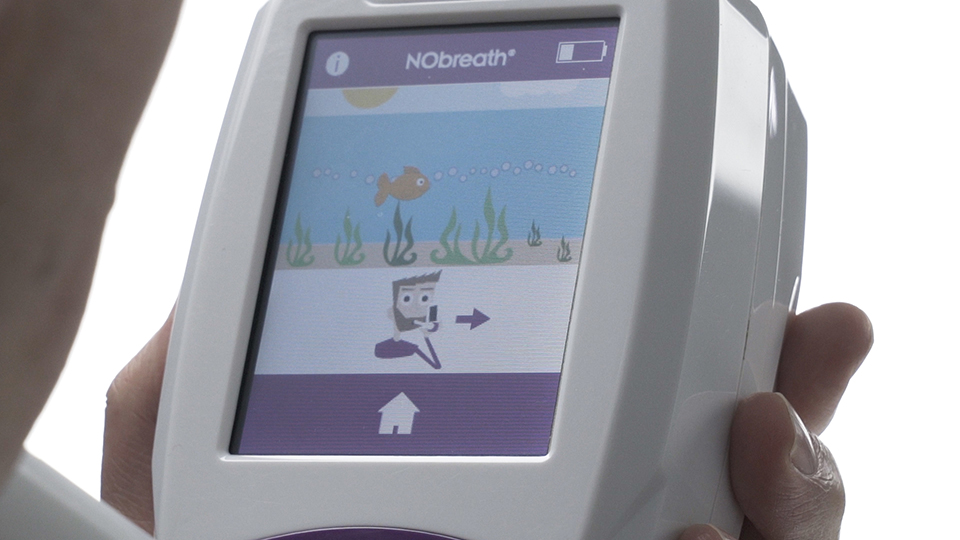
3
Deep breath in…
When prompted, take a deep breath in and exhale. Very little respiratory effort is required. In order to succesfully complete the test, the breath should be exhaled at a steady flow for the duration of test. Resistance in the mouthpiece and the on-screen incentive help achieve this.

4
Test complete!
A green tick will appear if it is a good quality test. The reading will display immediately afterwards as a single value in parts per billion on the screen. In accordance to the NICE guidance2, a reading of >50pbb is considered a positive test providing an indication that airway inflammation is present.
Free FeNO Chart PC Software Included
The software facilitates the electronic recording of FeNO test results with trending in order to easily track patient compliance to prescribed medication for better management of the condition.
A PDF report option allows for easy export and attachment to any patient record system in just a few clicks.

Key Features.
It can be used on adults and children
With simple on-screen prompts, the NObreath® can be used on both adults and children
SIMPLE TO USE TOUCHSCREEN CONTROL
Easy to follow icon based menus on a high resolution screen
Get accurate FeNO readings instantly
Obtain readings quickly, saving precious minutes in appointments
On-screen incentives for patient compliance
Ensures correct usage to obtain a good quality FeNO reading
Recommended
by NICE1
Tried and tested in clinical practice for diagnosis and monitoring of patients with Asthma
NO TEST LIMITS IMPOSED ON THE DEVICE
Low cost of ownership meaning you won’t need to replace the device after a certain amount of tests
Mouthpiece can be used more than once
Unlike other devices, the mouthpiece can be used by the same person more than once
Free PC Software
Download readings directly from the monitor and maintain a history using the free FeNOchart™ software.
Testimonials
Where to buy.
Frequently Asked Questions
FeNO stands for fractional exhaled nitric oxide. Higher FeNO levels may indicate eosinophilic airway inflammation. Measuring FeNO can help assess inflammation, monitor response to inhaled corticosteroids and support treatment decisions to improve asthma control.
The NObreath® is a handheld FeNO device used to measure fractional exhaled nitric oxide, an indicator of eosinophilic airway inflammation. FeNO testing can support asthma diagnosis and ongoing management.
The device is suitable for GP surgeries, asthma review clinics, community diagnostic hubs, respiratory services and secondary care settings. It can be used with adults and children for asthma assessment and follow up.
The patient inhales and then exhales steadily into a disposable mouthpiece. The device provides on screen guidance to support a consistent breath sample. The FeNO level displays as a single numerical value in parts per billion.
Yes. The device includes guided prompts that help children maintain a steady breath, making FeNO testing suitable for younger and older patients.
Yes. FeNO testing is recognised in UK asthma guidance. NICE NG245 includes FeNO as part of the diagnostic and monitoring pathway. The British Thoracic Society and Scottish Intercollegiate Guidelines Network also support the use of FeNO to help identify eosinophilic airway inflammation and guide treatment.
Higher FeNO values may indicate eosinophilic airway inflammation and potential responsiveness to inhaled corticosteroids. Lower FeNO levels may indicate controlled inflammation. FeNO results should be interpreted alongside symptoms and clinical history.
A FeNO test typically takes less than one minute including instruction and breath sampling.
Yes. A single patient mouthpiece is used for hygiene and accurate measurement. Each mouthpiece includes a built in bacterial and viral filter.
Only one single patient mouthpiece is required per testing session, and it can be reused multiple times during the same appointment with the same patient. This helps maintain low running costs. Around £3.70 per patient.
Yes. FeNOChart™ PC Software is included as standard. It allows clinicians to store results, compare historical data, review trends and generate PDF reports to support follow up and shared decision making. FeNOchart™ can be downloaded HERE
The device is recommended to be serviced once every 12 months.
No. The device uses a stable electrochemical sensor and does not require calibration gas. This reduces ongoing maintenance and supports cost efficient operation.
The device is covered with a 5 year limited manufacturer’s warranty.
Technical Specifications
| Concentration Range | 0-500ppb nitric oxide |
| Accuracy | ± 5ppb of measured value 50ppb ± 10% of measured value >50ppb |
| Repeatability | ± 5ppb of measured value 50ppb ± 10% of measured value >50ppb |
| Sensor Sensitivity | 1ppb |
| Breath test time | Adult 12 seconds Child 10 seconds |
| Warm up time | ~60 seconds |
| Ambient air test | 30 seconds |
| Operating temperature range | 10-30ºC (ambient) |
| Operating relative humidity (environmental) |
10-80% Rh (non-condensing) |
| Sensor operating life | 5 years; subject to correct use, maintenance and service |
| Detection principle | Electrochemical sensor |
| Maximum ambient operating level |
350 ppb NO |
| Power | Monitor:1 x main rechargeable Li-ion battery- Approx. 100 uses on fully charged battery 2 x Li-ion coin cell battery- Approx. 5 years Input: 5V, 0.5ADock:Input: 5V, 0.5A Output: 5V, 0.5APlug:Input: 100-240V ~ 50/60Hz., 0.2A Output: 5.0V, 1.0A |
| Battery Operation Life | Up to 100 tests Approx. |
| Display | Colour touch screen |
| Dimensions | Approx. 90 x 159 x 59 mm |
| Weight | Approx. 400g |
| Construction | Case Polycarbonate/ABS blend with SteriTouch® anti-microbial additiveMouthpiece Polypropylene |
References
1. NICE Guideline NG245: Asthma: diagnosis, monitoring and chronic asthma management (Published 2024).
2. Asthma: diagnosis and monitoring of asthma in adults, children and young people – Draft NICE clinical guidance. Published July 2017.
3. Ricciardolo F. Multiple roles of nitric oxide in the airways [Internet]. Multiple roles of nitric oxide in the airways. 2017 [cited 27 March 2017].
Available from: http://thorax.bmj.com/content/58/2/175.info
4. Andrew D. Smith, Jan O. Cowan, Sue Filsell, Chris MacLachlan, Gabrielle Monti-Sheehan, Pamela Jackson and D. Robin Taylor. Diagnosing Asthma: Comparisons between Exhaled Nitric Oxide Measurements and Conventional Tests. Am J Respir Crit Care Med Vol 169. pp 473-478, 2004.
5. D R Taylor, MW Pinenburg, A D Smith and J C D Jongste. Exhaled nitric oxide measurements: clinical application and interpretation. Thorax 2006;61:817-827.










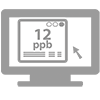
![hqdefault[1]](https://nobreath.co.uk/wp-content/uploads/2019/01/hqdefault1.jpg)
